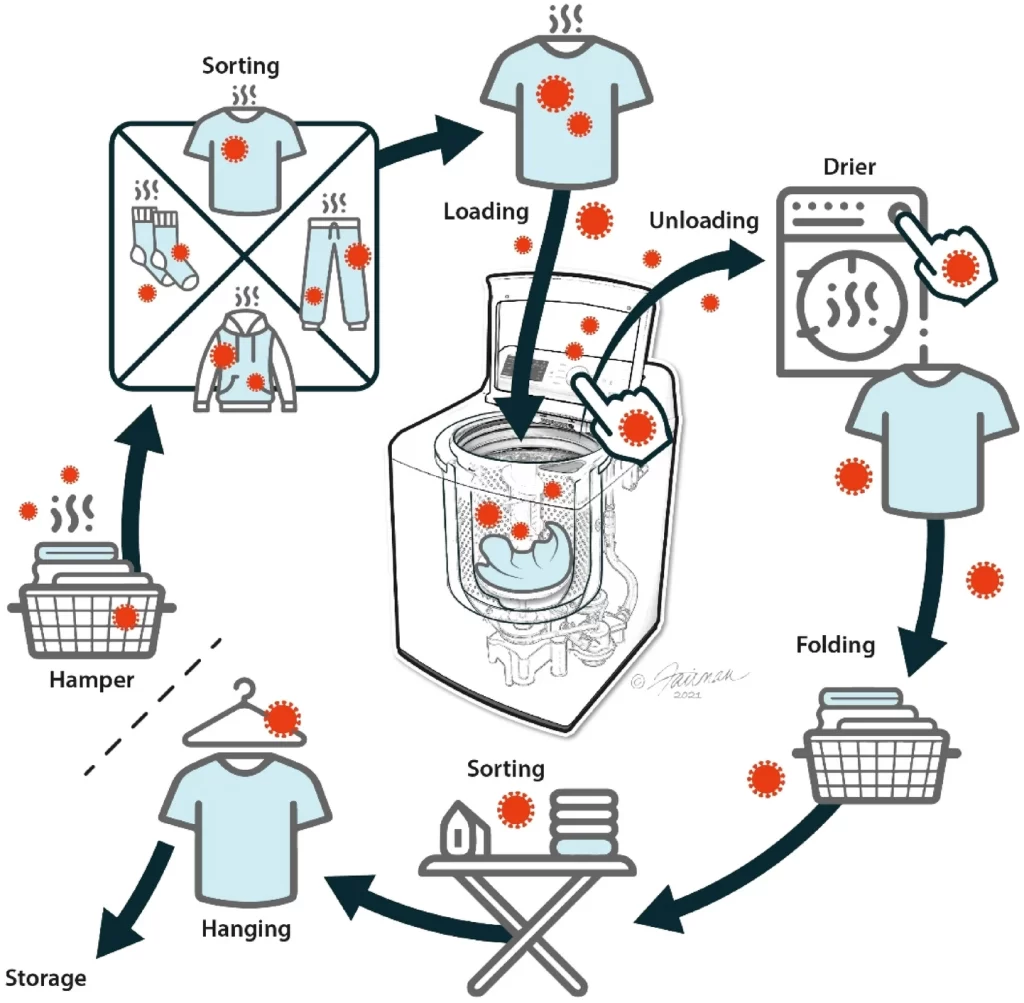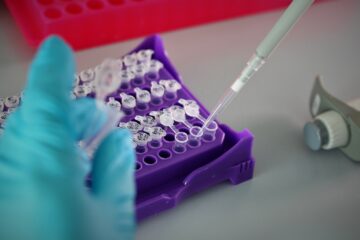It´s known that the clothes laundering process affords numerous opportunities to disseminate infectious viruses from contaminated clothing and that respiratory virus may remain infectious on clothing/fabrics and environmental surfaces for hours to days.
This fact received even more attention and concern during the COVID-19 pandemic and reaffirmed the importance of ensuring the virucidal efficacy of sanitizers.

In a paper published in 2022 in the Nature journal, USA researchers explored the efficacy of laundry sanitizers for inactivating Coronaviruses and Influenza viruses, using standardized suspension inactivation methods (EN 14476) and hard-surface inactivation methods (ASTM E1053-20) against SARS-CoV-2; Human Coronavirus 229E (HCoV 229E); Influenza A virus (2009-H1N1 A/Mexico); and Influenza B virus (B/Hong Kong).
“The efficacy was measured in terms of log10 reduction in infectious virus titer, after 15 min contact time (suspension studies) or 5 min contact time (hard surface studies) at 20 ± 1 °C.
In liquid suspension studies, laundry sanitizers containing p-chloro-m-xylenol (PCMX) or quaternary ammonium compounds (QAC) caused complete inactivation (≥ 4 log10) of HCoV 229E and SARS-CoV-2 within 15 min contact time at 20 ± 1 °C.
In hard surface studies, complete inactivation (≥ 4 log10) of each Coronavirus or Influenza virus, including SARS-CoV-2, was observed following a 5-min contact time at 20 ± 1 °C.”
They concluded that using a laundry sanitizer containing microbicidal actives may mitigate the contamination risk of surfaces when handling the laundry and washing appliances, adjacent surfaces, and the hands of individuals operating clothes contaminated with SARS-CoV-2, Influenza viruses, or other emerging enveloped viruses.
Learn about Crop Biolabs’ services for sanitizers and virucidal products.




